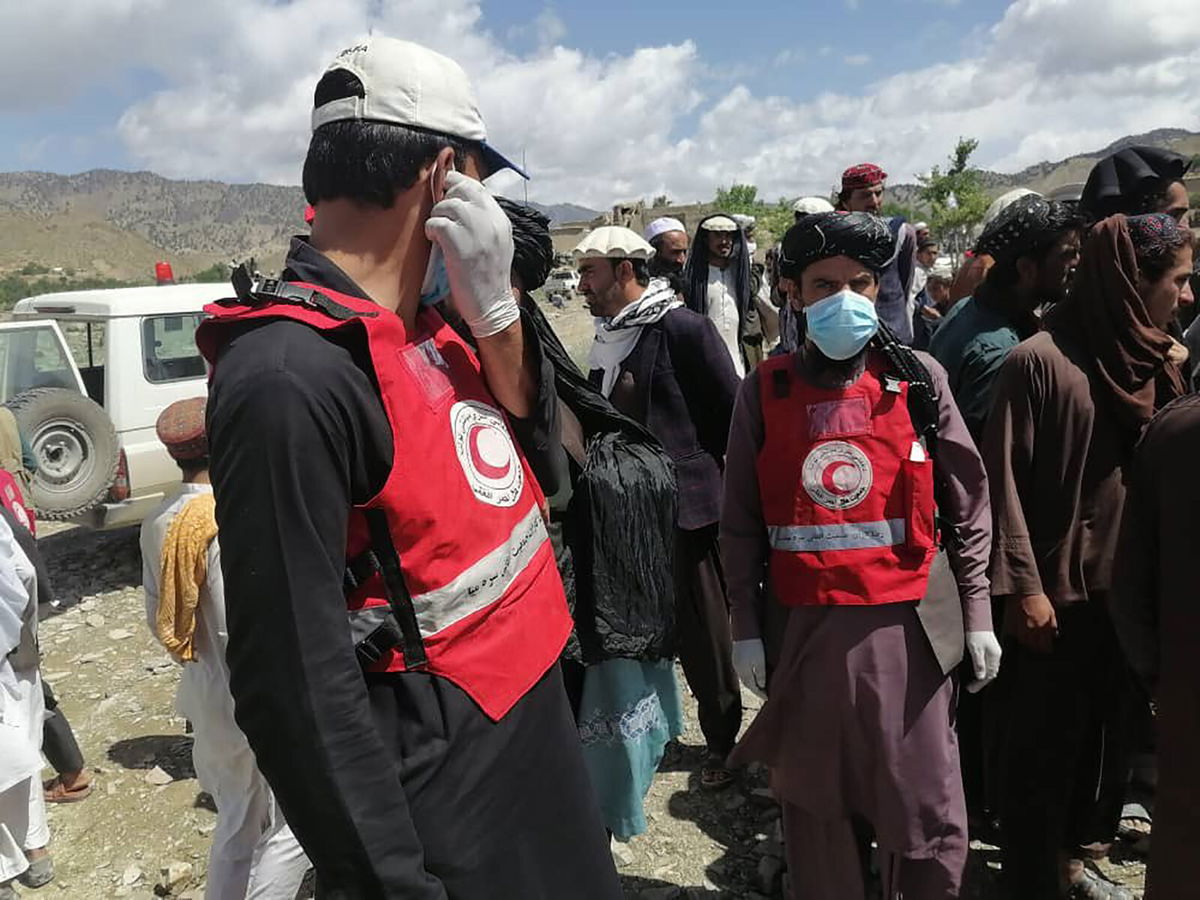Afghanistan reels from deadly earthquake as crisis-hit country struggles for aid

Afghan Red Crescent Society volunteers in Giyan district
By Jessie Yeung, CNN
Desperate search and rescue operations were underway in eastern Afghanistan on Thursday following an earthquake that killed more than 1,000 people, a heavy blow for a country already facing a dire economic and humanitarian crisis.
The magnitude 5.9 quake struck during the early hours of Wednesday near the city of Khost by the Pakistan border. At least 1,500 people have been reported injured — but officials warn the toll is likely to rise as many families were sleeping in flimsy housing structures when the quake hit.
Many homes in the area are made of mud, wood and other materials vulnerable to weather damage — and the quake coincided with heavy monsoon rains, adding to the danger of collapse.
Photos from nearby Paktika province, a rural and mountainous region where most of the deaths have been reported, show houses reduced to rubble. About 2,000 homes are thought to have been destroyed, according to the United Nations. Some people spent the night sleeping in makeshift outdoor shelters, as rescuers scoured for survivors by flashlight.
Medics and emergency staff from around the country are converging on the site, with assistance from some international agencies such as the World Health Organization.
However, help may be limited as many organizations pulled out of the aid-dependent country after the Taliban seized power last August.
The Taliban government has deployed emergency resources, including several helicopters and dozens of ambulances, and has offered compensation to victims’ families.
It has also called for foreign aid, pleading for “the generous support of all countries, international organizations, individuals and foundations” on Wednesday.
Limited international aid
The quake has compounded the problems already plaguing Afghanistan.
Though the economic crisis has loomed for years, the result of conflict and drought, it plunged to new depths after the Taliban takeover, which prompted the United States and its allies to freeze about $7 billion of the country’s foreign reserves and cut off international funding.
The move has crippled the Afghan economy and sent many of its 20 million people into a severe hunger crisis. Millions of Afghans are out of work, government employees haven’t been paid, and the price of food has soared, with reports of some families so desperate to eat they have resorted to selling their children.
Few aid agencies remain, and those that do are stretched thin. On Wednesday, the WHO said it had mobilized “all of the resources” from around the country, with teams on the ground providing medicine and emergency support. But, as one WHO official put it, “The resources are overstretched here, not just for this region.”
Experts and officials say the most pressing immediate needs include medical care and transportation for the injured, shelter and supplies for the displaced, food and water, and clothing.
The UN has distributed medical supplies and sent mobile health teams to Afghanistan — but warned that it does not have search and rescue capabilities, and that regional neighbors have little capacity to step in.
The US no longer has a presence in Afghanistan following the full withdrawal of its troops and collapse of the previous US-backed Afghan government. Like nearly all other nations, it does not have official relations with the Taliban government.
Turkey is the country most able to provide assistance, said Ramiz Alakbarov, UN Deputy Special Representative for Afghanistan. He said the Turkish Embassy in Afghanistan was “waiting for the formal request.”
Turkey’s Ministry of Foreign Affairs said Wednesday that the Turkish Red Crescent, which operates in Afghanistan, had sent humanitarian aid for the victims. On Thursday, a Taliban spokesperson said humanitarian aid had also arrived from Qatar, Iran, and Pakistan, with flights and trucks carrying items including medicine, tents and tarpaulins.
An estimated $15 million of aid is needed to respond to the disaster, Alakbarov said — a figure that will likely keep rising as information trickles in about the situation on the ground.
“Our teams do not have specific equipment to take people from under the rubble,” Alakbarov said. “This has to rely mostly on the efforts of the de facto authorities, which also have certain limitations in that respect … I don’t have the detailed reports of how well positioned they are to operate and deploy such machinery to these mountainous areas.”
Information including damage assessments is limited for now, with telecommunications disrupted in remote areas and poor weather conditions hampering transportation, according to the International Federation of Red Cross and Red Crescent Societies (IFRC).
“The country is reeling from the effects of decades of conflict, protracted severe drought, the effects of other intense climate-related disasters, extreme economic hardship, a battered health system, and system-wide gaps,” said the IFRC on Wednesday, calling for more global support.
“Hence, even though the disaster is localized, the scale of humanitarian needs will be massive.”
The-CNN-Wire
™ & © 2022 Cable News Network, Inc., a WarnerMedia Company. All rights reserved.